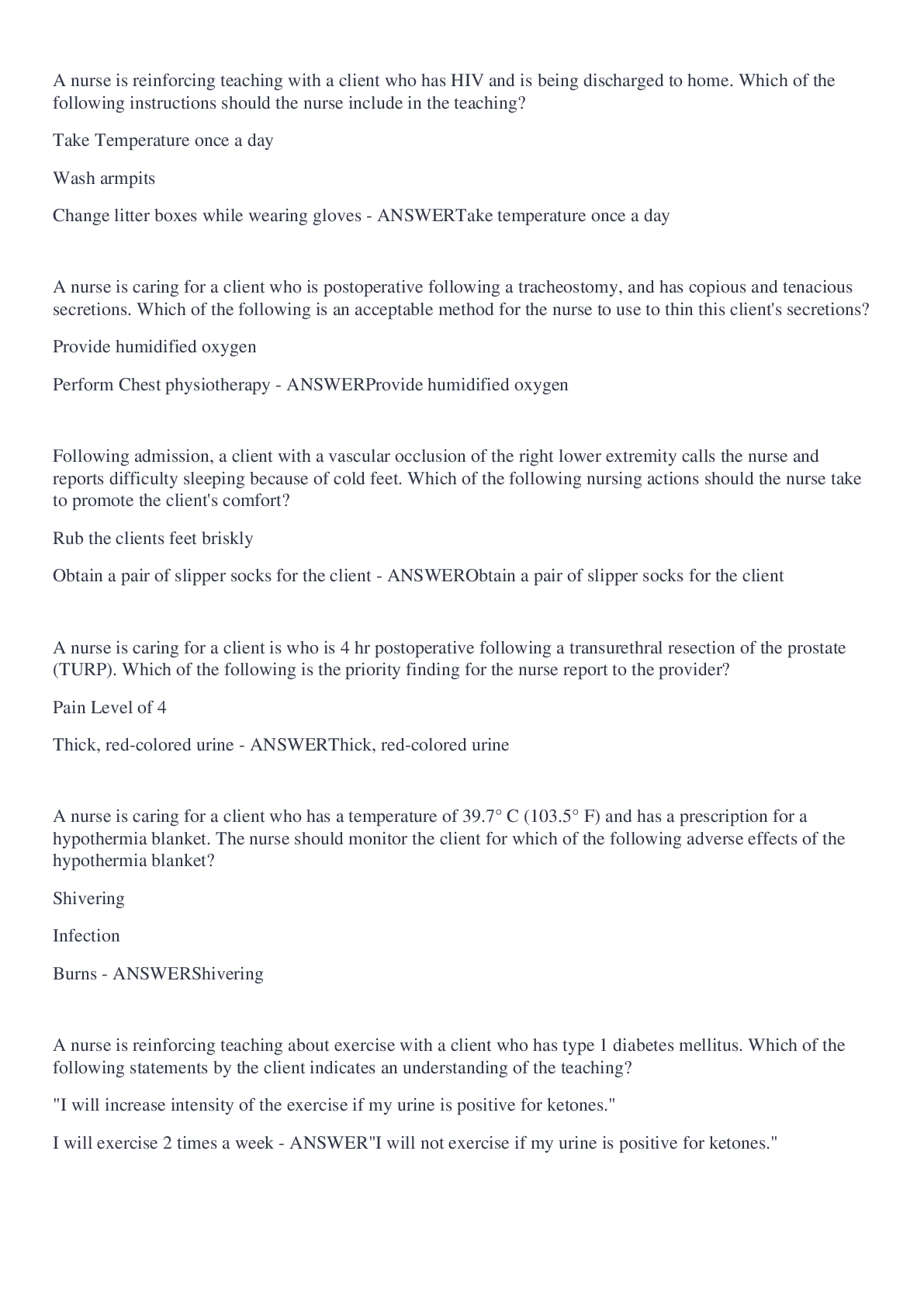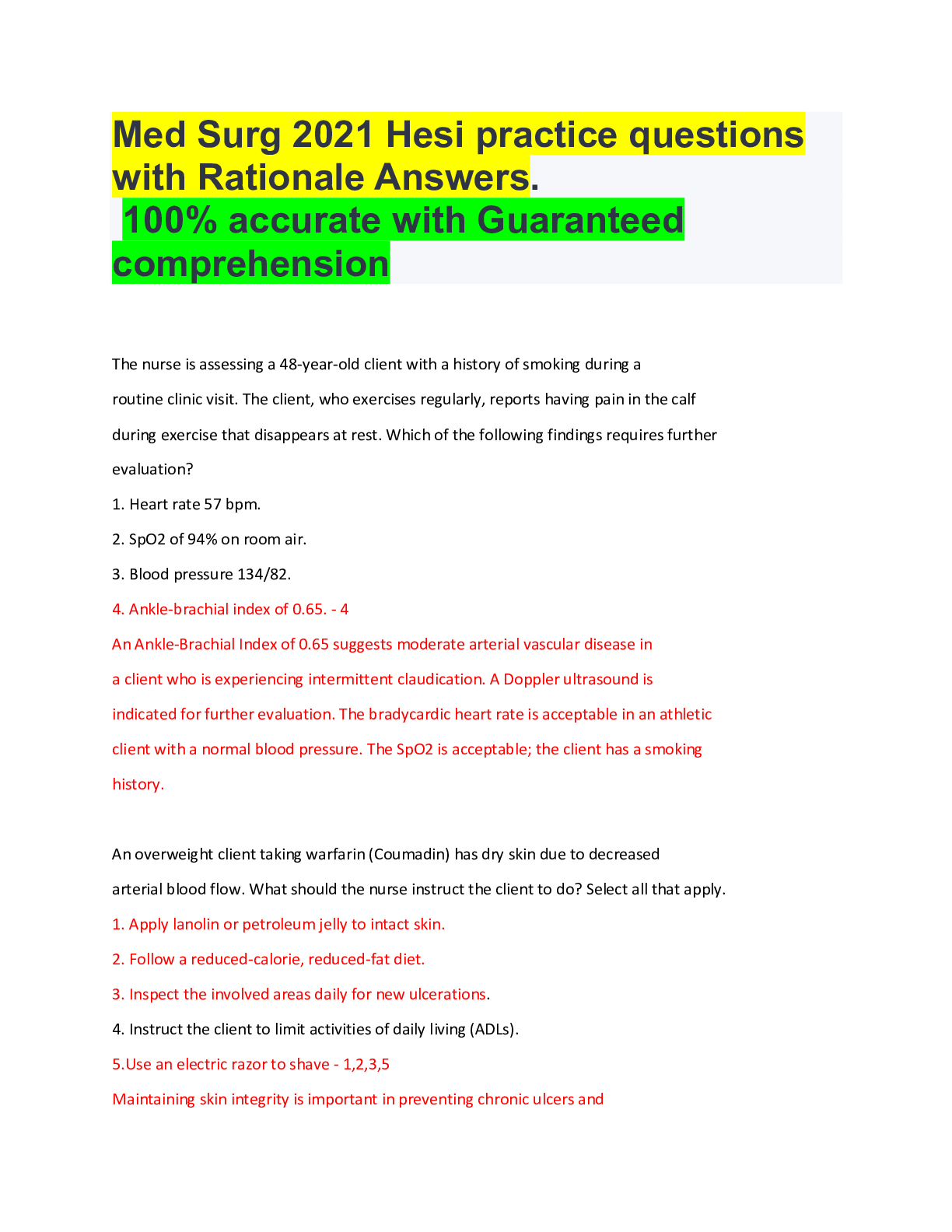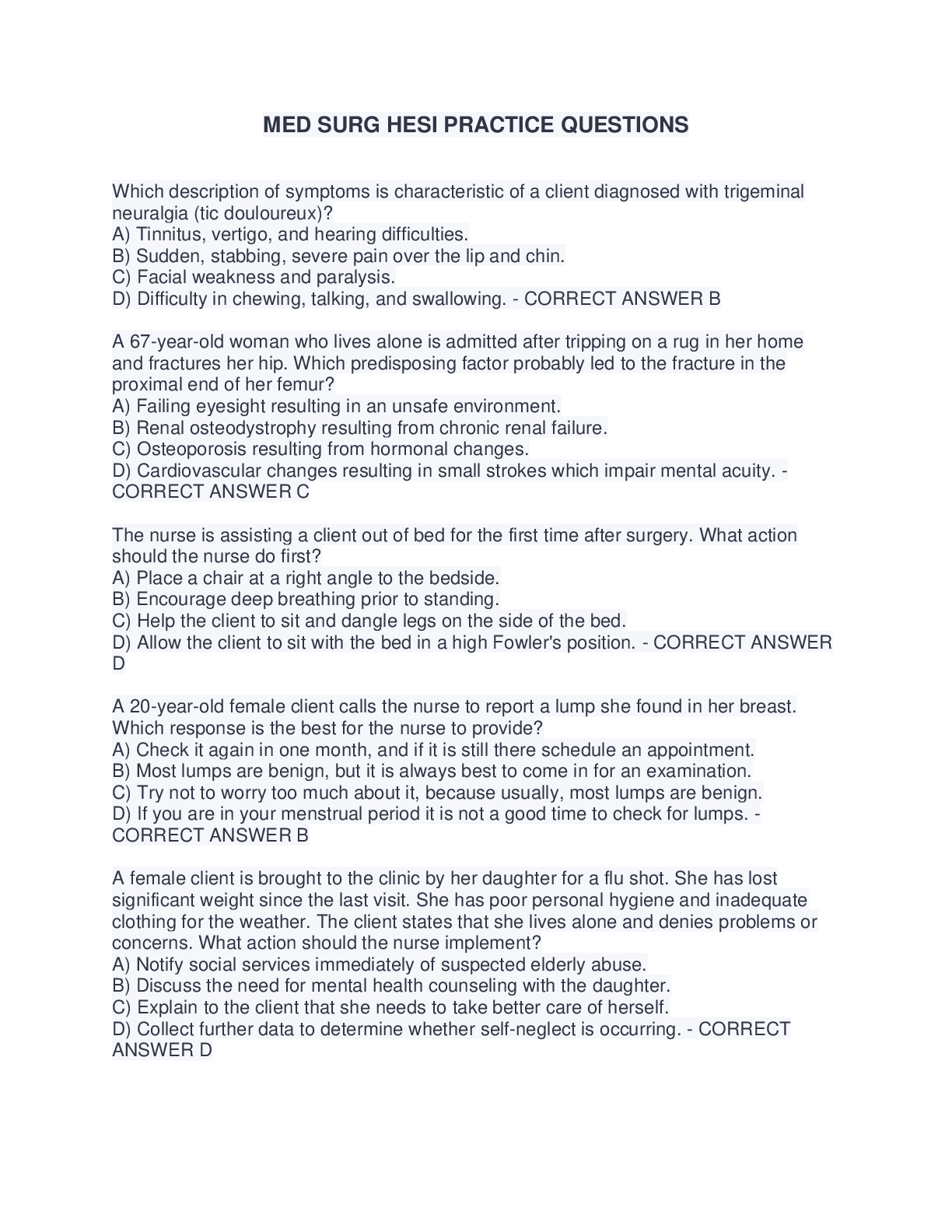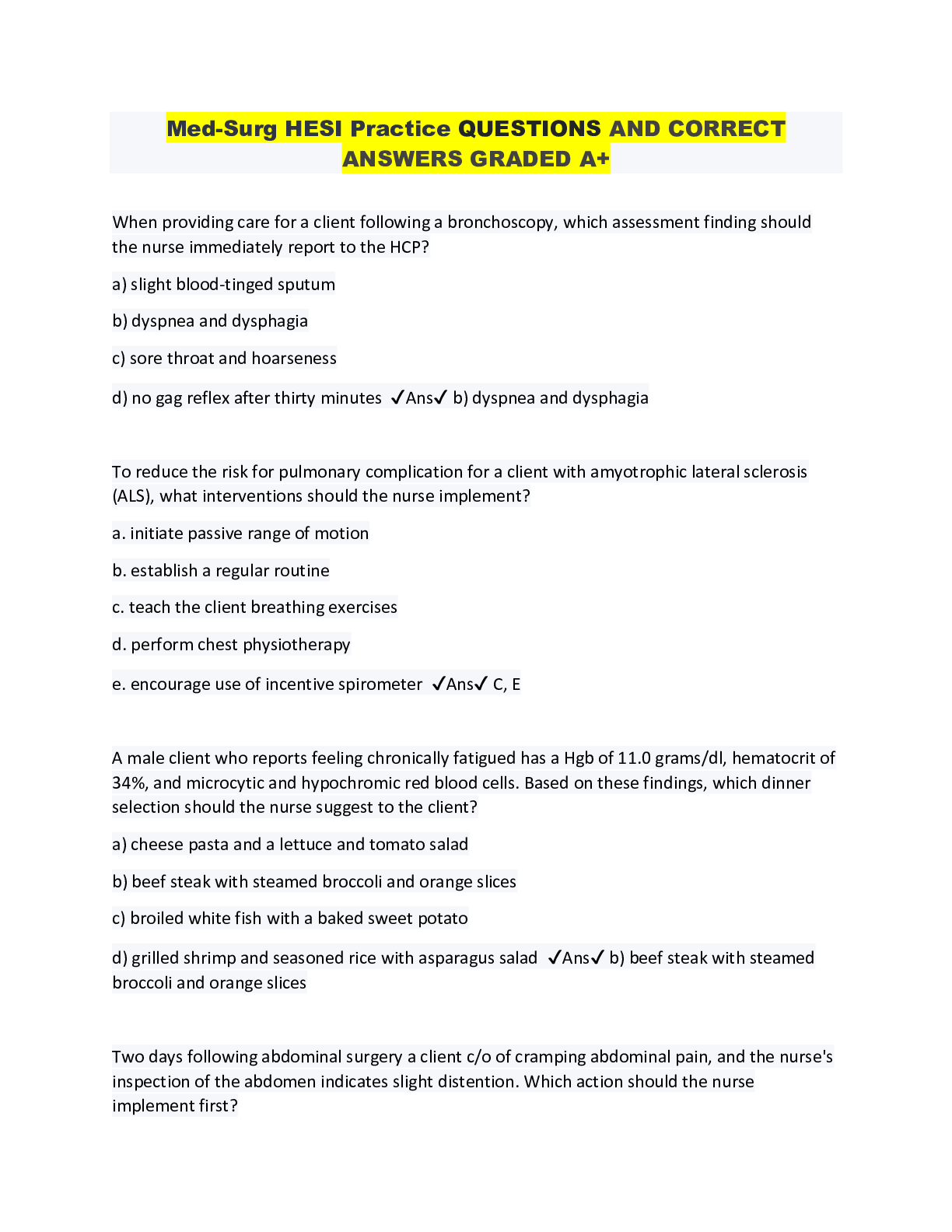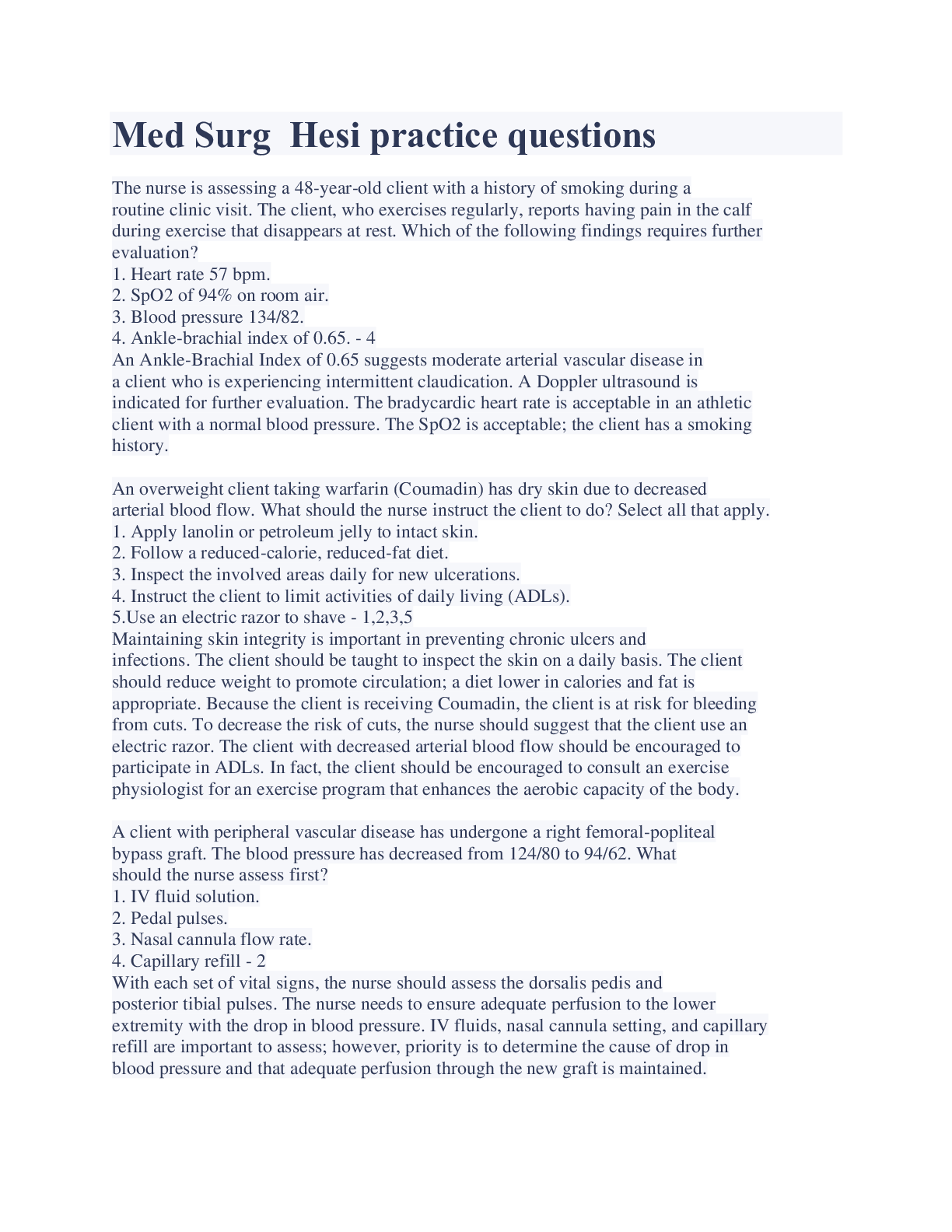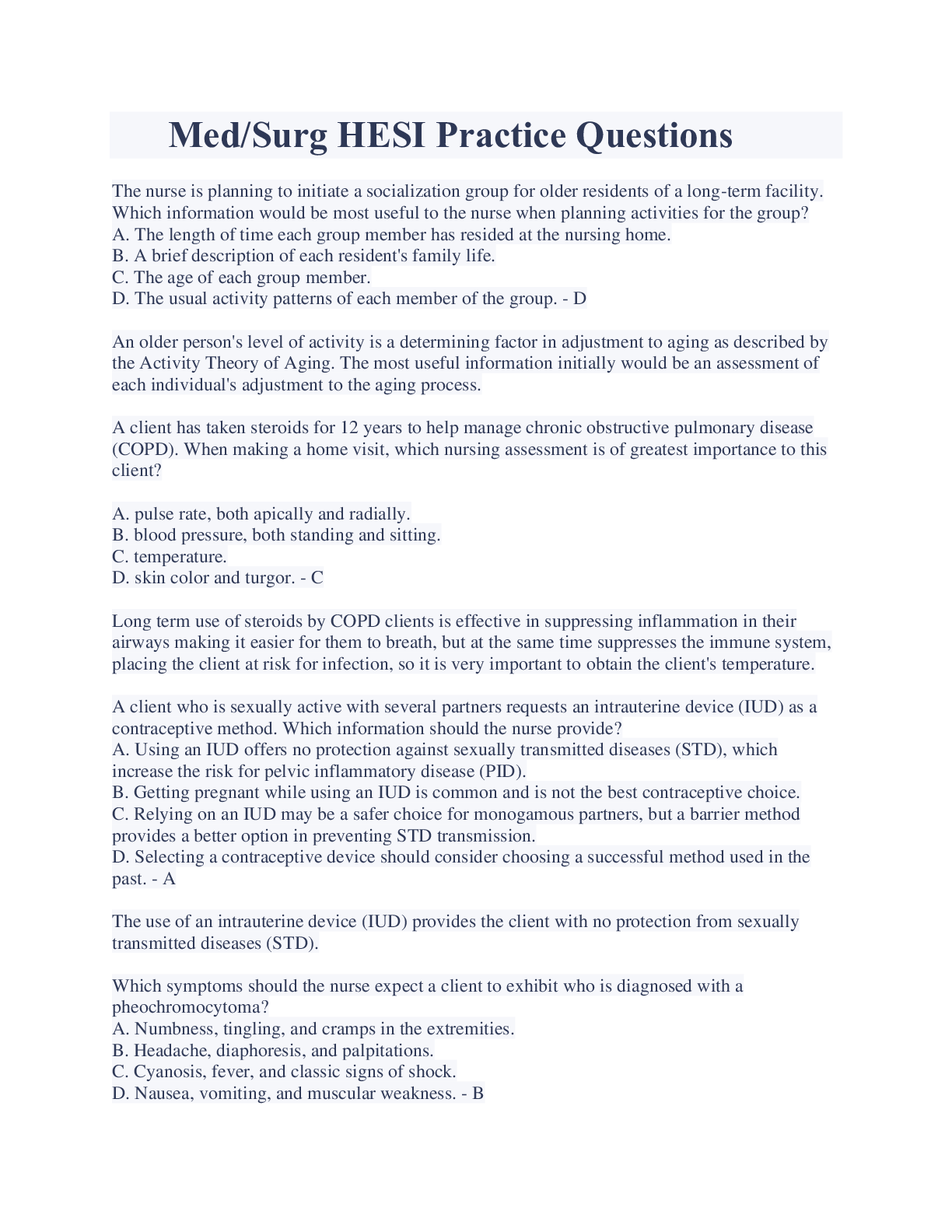*NURSING > HESI MED SURG > Med Surg HESI Practice Questions (All)
Med Surg HESI Practice Questions
Document Content and Description Below
The nurse is assisting a client out of bed for the first time after surgery. What action should the nurse do first? A) Place a chair at a right angle to the bedside. B) Encourage deep breathing pri... or to standing. C) Help the client to sit and dangle legs on the side of the bed. D) Allow the client to sit with the bed in a high Fowler's position. - ANSWER D) Allow the client to sit with the bed in a high Fowler's position. The first step is to raise the head of the bed to a high Fowler's position (D), which allow venous return to compensate from lying flat and vasodilating effects of perioperative drugs. (A, B, and C) are implemented after (D). A client with multiple sclerosis has experienced an exacerbation of symptoms, including paresthesias, diplopia, and nystagmus. Which instruction should the nurse provide? A) Stay out of direct sunlight. B) Restrict intake of high protein foods. C) Schedule extra rest periods. D) Go to the emergency room immediately. - ANSWER C) Schedule extra rest periods. Exacerbations of the symptoms of MS occur most commonly as the result of fatigue and stress. Extra rest periods should be scheduled (C) to reduce the symptoms. (A, B, and D) are not necessary. During a health fair, a 72-year-old male client tells the nurse that he is experiencing shortness of breath. Auscultation reveals crackles and wheezing in both lungs. Suspecting that the client might have chronic bronchitis, which classic symptom should the nurse expect this client to have? A) Racing pulse with exertion. B) Clubbing of the fingers. C) An increased chest diameter. D) Productive cough with grayish-white sputum. - ANSWER D) Productive cough with grayish-white sputum. Chronic bronchitis, one of the diseases comprising the diagnosis of COPD, is characterized by a productive cough with grayish-white sputum (D), which usually occurs in the morning and is often ignored by smokers. (A) is not related to chronic bronchitis; however, it is indicative of other problems such as ventricular tachycardia and should be explored. (B and C) are symptoms of emphysema and are not consistent with the other symptoms. (C) is usually referred to as a "barrel chest." The nurse is assessing a client who smokes cigarettes and has been diagnosed with emphysema. Which finding should the nurse expect this client to exhibit? A) A decreased total lung capacity. B) Normal arterial blood gases. C) Normal skin coloring. D) An absence of sputum. - ANSWER C) Normal skin coloring. The differentiation between the "pink puffer" and the "blue bloater" is a well-known method of differentiating clients exhibiting symptoms of emphysema (normal color but puffing respirations) from those exhibiting symptoms of chronic bronchitis (edematous, cyanotic, shallow respirations) (C). Total lung capacity is increased in emphysema since these clients have hyperinflated lungs (A). Arterial blood gases are typically abnormal (B). (D) is indicative of bronchitis, while clients with emphysema usually have copious amounts of thick, white sputum. A client has taken steroids for 12 years to help manage chronic obstructive pulmonary disease (COPD). When making a home visit, which nursing function is of greatest importance to this client? Assess the client's A) pulse rate, both apically and radially. B) blood pressure, both standing and sitting. C) temperature. D) skin color and turgor. - ANSWER C) temperature. It is very important to check the client's temperature (C). Infection is the most common factor precipitating respiratory distress. Clients with COPD who are on maintenance doses of corticosteroids are particularly predisposed to infection. (A and B) are important data for baseline and ongoing assessment, but they are not as important as temperature measurement for this client who is taking steroids. Assessment of skin color and turgor is less important (D). A client taking furosemide (Lasix), reports difficulty sleeping. What question is important for the nurse to ask the client? A) What dose of medication are you taking? B) Are you eating foods rich in potassium? C) Have you lost weight recently? D) At what time do you take your medication? - ANSWER D) At what time do you take your medication? The nurse needs to first determine at what time of day the client takes the Lasix (D). Because of the diuretic effect of Lasix, clients should take the medication in the morning to prevent nocturia. The actual dose of medication (A) is of less importance than the time taken. (B) is not related to the insomnia. (C) is valuable information about the effect of the diuretic, but is not likely to be related to insomnia. A 58-year-old client, who has no health problems, asks the nurse about the Pneumovax vaccine. The nurse's response to the client should be based on which information? A) The vaccine is given [Show More]
Last updated: 1 year ago
Preview 1 out of 6 pages
Instant download
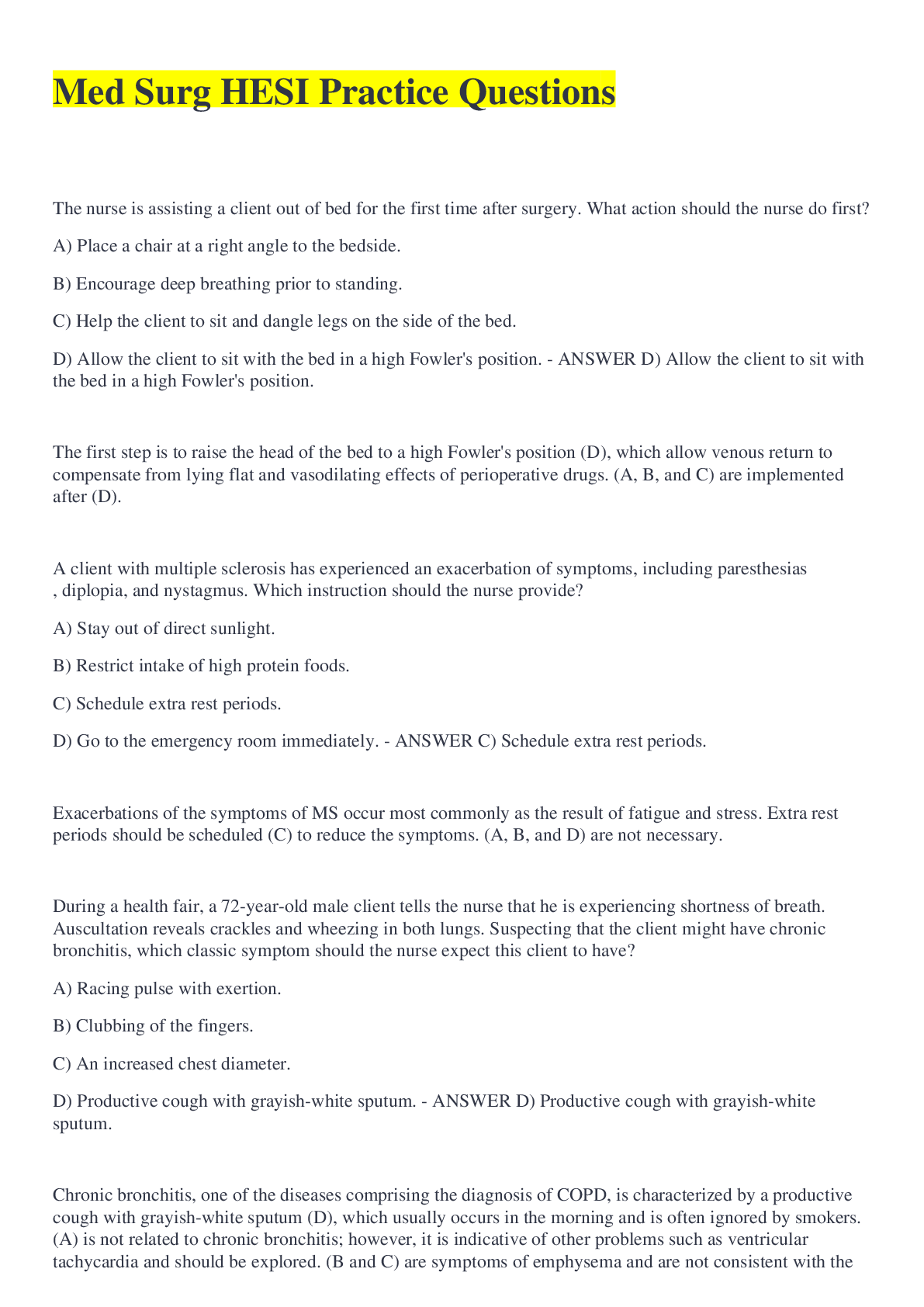
Buy this document to get the full access instantly
Instant Download Access after purchase
Add to cartInstant download
Reviews( 0 )
Document information
Connected school, study & course
About the document
Uploaded On
Jul 27, 2022
Number of pages
6
Written in
Additional information
This document has been written for:
Uploaded
Jul 27, 2022
Downloads
0
Views
42

